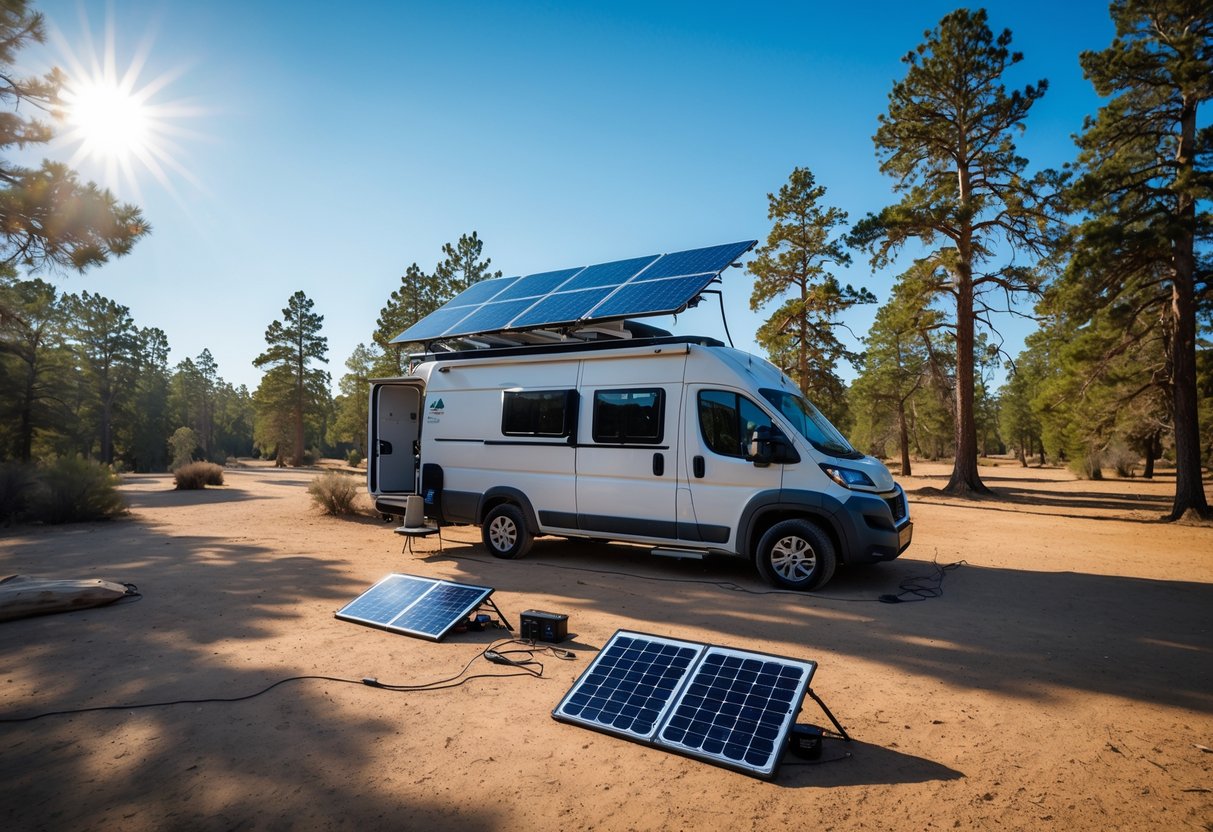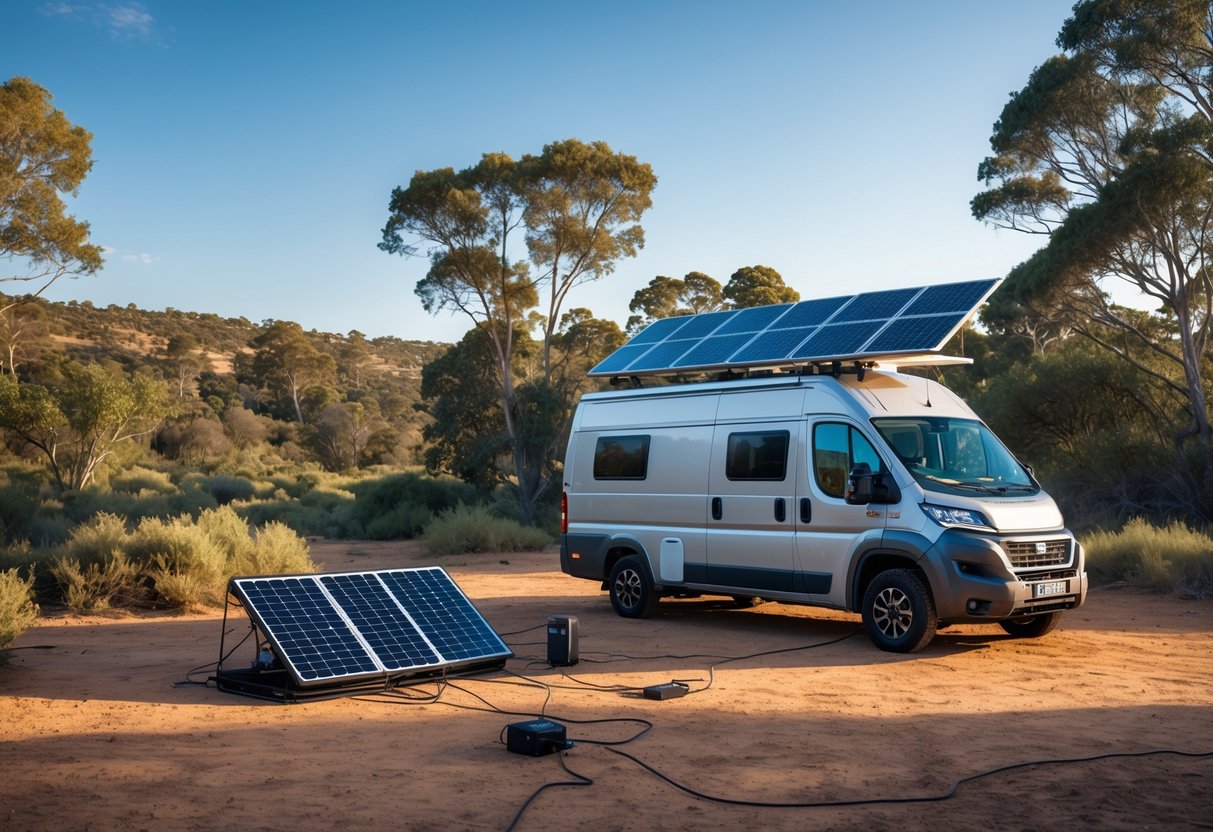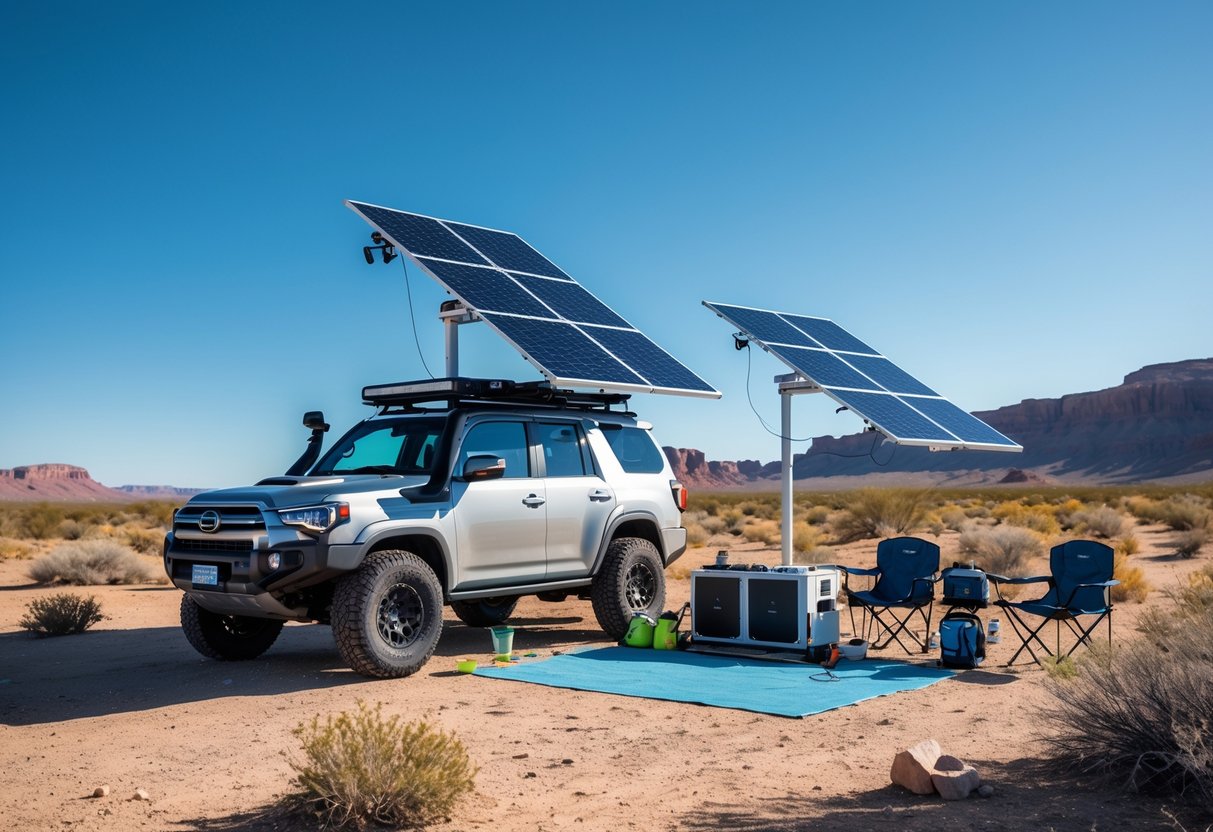Solar Tips for Boondocking: When you’re boondocking, having a reliable solar power system is key to staying comfortable and independent. Understanding how to size your battery bank, use the right solar panels, and maintain proper wiring will help you make the most of your solar setup.
This Solar tips for boondocking helps prevent common mistakes and keeps your solar setup running efficiently off-grid. Properly planning your solar setup is essential for successful boondocking.

You’ll want to focus on good connections, proper circuit protection, and choosing the best type of solar charge controller for your needs. These solar setup details affect how well your system stores and uses energy.
Knowing how to monitor your battery health also ensures you don’t drain your power unexpectedly. A well-designed solar setup is your ticket to independence while boondocking.
Understanding Solar Tips for Boondocking

When you rely on a solar setup while boondocking, you need to know how each part of your system works together. This includes how solar panels collect energy, the job of charge controllers and inverters, the types of batteries you can use, and the difference between AC and DC power.
Knowing the basics of your solar setup helps you plan a reliable and efficient system and thse Solar tips for boondocking help you get that sorted out. Each component of your solar setup plays a critical role in staying powered off-grid.
How Solar Panels Work in Off-Grid Camping
Solar panels capture sunlight and turn it into electricity. The panels are made of cells that create direct current (DC) power when exposed to sun.
The more sunlight your solar setup gets, the more power you generate. You want to place your solar panels where they can face the sun for the most hours each day.
During trips these Solar tips for boondocking become even more important, this often means setting panels up on your RV roof or on portable mounts. The size and number of panels in your solar setup depend on your power needs.
Energy-efficient equipment reduces the demand on your solar setup. Choosing the right solar setup makes off-grid living much easier.
The Role of Charge Controllers and Inverters
A charge controller sits between your solar panels and batteries. Its job is to manage the energy flow, ensuring your batteries charge safely without overloading or draining.
There are two main types of charge controllers: PWM and MPPT. MPPT controllers are more efficient and better for larger solar setups or when panels produce varying voltage.
An inverter converts DC battery power into alternating current (AC). Most RV appliances run on AC power, so you’ll need an inverter as part of your solar setup to use standard plugs inside your vehicle.
The inverter size in your solar setup should match the total wattage of your devices. Matching your inverter to your solar setup ensures you can run all necessary appliances.
Types of RV Batteries and Their Impact
The battery stores solar energy for use when the sun isn’t shining. Common types include lead-acid (flooded and AGM) and lithium-ion batteries.
Lead-acid batteries are cheaper but heavier and need regular maintenance. Lithium-ion batteries cost more but last longer, weigh less, and can be discharged deeper without damage.
Your battery type affects how much usable power you actually have in your solar setup. For boondocking, a good battery system in your solar setup keeps your lights, fridge, and other devices powered for days without solar input.
The Difference Between AC and DC Power
Solar panels and batteries produce and store direct current (DC) power. Most RV systems use 12V DC for basic functions like lighting and water pumps.
However, many RV appliances and electronics require alternating current (AC). This means your solar setup needs an inverter to change DC into AC for items like microwaves, air conditioners, and TVs.
Using DC power directly in your solar setup is more efficient and conserves battery life. Knowing when to use AC or DC power in your solar setup helps extend your energy supply while boondocking.
Planning Your Solar Setup for Dry Camping
When you plan your Solar tips for boondocking setup for dry camping, you need to focus on matching your power supply to your daily energy use and the space you have. Picking the right panels and batteries for your solar setup affects how long you can stay off-grid.
You’ll also decide if portable or fixed panels suit your camping style and setup. The right solar setup gives you more freedom to choose your campsite.
Calculating Your Energy Needs and Amp-Hours
Start by listing the devices you will use daily and their power consumption. Check the wattage of lights, fridge, phone chargers, fans, and any other electronics.
Multiply each device’s wattage by the hours you expect to use it to get total watt-hours per day. Next, convert watt-hours to amp-hours (Ah) by dividing watt-hours by your battery voltage (usually 12V).
Plan for extra capacity—about 20-30% more—so batteries don’t drain fully, which shortens their life. Lithium batteries in your solar setup can regularly discharge deeper without damage compared to lead-acid batteries.
Choosing the Right Solar Panels and Battery Configuration
These Solar tips for boondocking will help you choose solar panels for your setup based on your energy needs and available roof space. Panels rated between 100 to 150 watts are common for RVs and work well in most solar setups.
Your battery bank in your solar setup should be sized big enough to store at least two days’ worth of power to cover cloudy days. Wiring is critical in your solar setup—use thick, short cables to reduce energy loss.
For batteries, deep cycle lithium or AGM options work well in a solar setup. Stacking 6-volt deep cycle batteries in series and parallel is common for lead-acid solar setups to reach the needed voltage and capacity.
Selecting Portable Versus Fixed Solar Panels
Decide if fixed roof-mounted panels or portable panels better match your solar setup. Fixed panels stay on your RV roof, charging whenever there’s sunlight.
Portable panels can be moved and tilted toward the sun to maximize power, especially useful during winter or shaded areas. They require more setup but offer flexibility and often deliver more power overall.
If you stay in one spot for a while, portable panels can be worth the effort for your solar setup. Some campers use a mix of both portable and fixed panels to boost their solar setup.
Essential Solar Tips for Boondocking Setup Help
To make the most of your solar setup while boondocking, focus on placing and maintaining your solar panels correctly. Use energy wisely and plan for emergencies with backup power options.
These steps help keep your solar setup running without risking safety or wasting energy. A well-maintained solar setup is crucial for reliable off-grid power.
Optimizing Panel Placement and Maintenance
Place your solar panels where they get the most direct sunlight, free from shade caused by trees or your RV’s own structure. Panels work best when angled perpendicular to the sun.
Consider using tilting brackets in your solar setup to adjust the angle, especially in winter when the sun is lower. Keep panels clean by regularly wiping off dust, dirt, and bird droppings.
Dirty panels can drop power output by 20% or more. Also, check wiring connections in your solar setup frequently for corrosion or loose contacts to avoid power loss or hazards.
Energy Conservation and Usage Strategies
Monitor your power use closely with a battery monitor so you know your battery’s charge level at all times. Avoid running high-draw devices during low sunlight hours.
Use energy-efficient appliances in your solar setup, like 12-volt refrigerators, LED lighting, and low-wattage fans. Turn off or unplug devices in your solar setup when not in use.
Prioritize DC power loads over inverters to minimize power loss in your solar setup. Plan activities and charging schedules around the sun’s availability to stretch your battery life.
Backup Power Solutions for Extended Trips
Even with a solar setup, plan for backup power to avoid being stranded with dead batteries. Bring a generator for cloudy days or high-demand situations, but use it sparingly to save fuel and reduce noise. Here are more Solar tips for boondocking to help with backups.
Consider carrying extra deep-cycle batteries sized to your solar setup needs. A good battery bank in your solar setup provides longer power storage and less risk of damaging the batteries through deep discharges.
Always use proper fuses and breakers on your backup systems to stay safe. Backup solutions are a smart addition to any solar setup for boondocking.
Common Challenges and Expert Solutions
When using a solar setup for boondocking, you may face issues like weather effects, shaded spots, and power troubles. Knowing how to handle these problems keeps your solar setup running smoothly.
Dealing with Weather and Shaded Locations
Weather can reduce your solar setup’s output. Clouds, rain, or fog lower the sunlight hitting your panels, so your RV batteries may not charge fully.
You can minimize this by using high-quality panels with good efficiency and adding extra panel capacity to your solar setup. Shade from trees, roofs, or other objects also cuts power.
Even partial shade on one panel can reduce the whole solar setup’s output. Try to park where sunlight hits your panels directly for most of the day.
Portable panels in your solar setup can help you adjust to better sun angles. Use a solar charge controller with Maximum Power Point Tracking (MPPT) for your solar setup.
This technology improves how your solar setup handles low-light and partial shading. It keeps your batteries charging better in tough conditions and is a smart upgrade for any solar setup.
Troubleshooting Power Loss and Electrical Issues
Solar tips for boondocking to help with troubleshooting. If your solar system suddenly loses power, check these key points to ensure your solar system remains operational. Solar system troubleshooting starts with a careful inspection of all components.
Connections: Loose or corroded wires in your solar system can reduce electrical flow. Inspect all wiring and terminals within your solar system for signs of damage or corrosion.
Batteries: Overcharged or deeply drained batteries may fail to hold power in your solar system. Use a proper battery monitor to keep track of your solar system’s battery health.
Fuses and Breakers: A tripped fuse or breaker can stop your solar system. Reset or replace these components in your solar system as needed.
Solar Controller: A malfunctioning solar controller can block charging in your solar system. Reset the device and consult the manual for your solar system if problems persist.
Keep your battery bank well maintained to support your solar system. Avoid running your solar system below critical charge levels for optimal performance.
Routine checking and cleaning of panels will help your solar system stay reliable. A clean solar system operates more efficiently and delivers better results.
Inspect your solar system regularly to catch any issues early. Addressing problems quickly will extend the life of your solar system.
By following these steps, you can maintain your solar system and prevent power loss. Proper care ensures your solar system continues to provide consistent energy.
A well-maintained solar system offers peace of mind and energy savings. Make solar system care a regular part of your routine for the best results.

